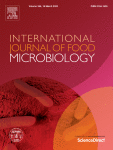Ver ítem
- xmlui.general.dspace_homeCentros Regionales y EEAsCentro Regional Mendoza - San JuanEEA MendozaArtículos científicosxmlui.ArtifactBrowser.ItemViewer.trail
- Inicio
- Centros Regionales y EEAs
- Centro Regional Mendoza - San Juan
- EEA Mendoza
- Artículos científicos
- Ver ítem
Effect of non-wine Saccharomyces yeasts and bottle aging on the release and generation of aromas in semi-synthetic Tempranillo wines
Resumen
Interest in the use of non-conventional yeasts in wine fermentation has been increased in the last years in the wine sector. The main objective of this manuscript was to explore the aromatic diversity produced by wild and non-wine strains of S. cerevisiae, S. eubayanus, S. kudriavzevii, and S. uvarum species in young and bottle-aged Tempranillo wines as well as evaluate their fermentation capacity and the yield on ethanol, glycerol, and organic acids,
[ver mas...]
Interest in the use of non-conventional yeasts in wine fermentation has been increased in the last years in the wine sector. The main objective of this manuscript was to explore the aromatic diversity produced by wild and non-wine strains of S. cerevisiae, S. eubayanus, S. kudriavzevii, and S. uvarum species in young and bottle-aged Tempranillo wines as well as evaluate their fermentation capacity and the yield on ethanol, glycerol, and organic acids, that can contribute to diminishing the effects of climate change on wines.
S. uvarum strain U1 showed the highest ability to release or de novo produce monoterpenes, such as geraniol and citronellol, whose values were 1.5 and 3.5-fold higher than those of the wine S. cerevisiae strain. We found that compared to the normal values for red wines, β-phenylethyl acetate was highly synthesized by U1 and E1 strains, achieving 1 mg/L. Additionally, after aging, wines of S. eubayanus strains contained the highest levels of this acetate. Malic acid was highly degraded by S. kudriavzevii yeasts, resulting in the highest yields of lactic acid (>5-fold) and ethyl lactate (>2.8-fold) in their wines. In aged wines, we observed that the modulating effects of yeast strain were very high in β-ionone. S. uvarum strains U1 and BMV58 produced an important aging attribute, ethyl isobutyrate, which was highly enhanced during the aging. Also, the agave S. cerevisiae strain develops an essential aroma after aging, reaching the highest ethyl leucate contents.
According to the results obtained, the use of wild non-wine strains of S. cerevisiae and strains of the cryotolerant species S. eubayanus, S. kudriavzevii, and S. uvarum in Tempranillo wine fermentation increase the aroma complexity. In addition, wines from S. kudriavzevii strains had twice additional glycerol, those from S. uvarum 4-fold more succinic acid, while wines from wild strains yielded 1% v/v less ethanol which may solve wine problems associated with climate change.
[Cerrar]

Autor
Perez, Maria Dolores;
Denat, Marie;
Heras, José María;
Guillamón, José Manuel;
Ferreira, Vicente;
Querol, Amparo;
Fuente
International Journal of Food Microbiology 365 : 109554 (March 2022)
Fecha
2022-03
Editorial
Elsevier
ISSN
0168-1605
Formato
pdf
Tipo de documento
artículo
Palabras Claves
Derechos de acceso
Restringido
 Excepto donde se diga explicitamente, este item se publica bajo la siguiente descripción: Creative Commons Attribution-NonCommercial-ShareAlike 2.5 Unported (CC BY-NC-SA 2.5)
Excepto donde se diga explicitamente, este item se publica bajo la siguiente descripción: Creative Commons Attribution-NonCommercial-ShareAlike 2.5 Unported (CC BY-NC-SA 2.5)

